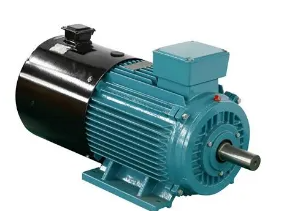I. Inverter motor
Inverter motors are motors that use inverter technology to control the speed of the motor. Inverter technology uses electronic equipment to control the speed of the motor, thus realizing the control of the motor’s speed, power and efficiency.
Frequency conversion motor by the “special frequency induction motor + frequency converter” AC speed control method composed of a high degree of mechanical automation of the motor equipment, this combination has completely replaced the traditional mechanical speed control and DC speed control program; with the power electronics technology, microelectronics technology, the amazing development of the use of With the amazing development of power electronics technology, microelectronics technology, the use of “special frequency induction motor + frequency converter” of the AC speed mode, with its excellent performance and economy, in the field of speed control to lead a replacement of the traditional speed mode of the new generation of change.
Due to the inverter motor speed control and control on the unparalleled superiority, so that the degree of mechanical automation and productivity greatly improved; EPS power supply as the future trend of the development of inverter technology and thus has its own particularity, but due to the inverter motor system for high-speed or low-speed operation, rotational speed of the dynamic response and other needs of the main body of the electric motor as a power to put forward the harsh requirements will be given to the inverter motor will be brought to the inverter motor. In electromagnetic, structure, insulation and other aspects of innovation. It can be said that due to the superiority of the inverter motor in frequency control over ordinary motors, wherever the frequency converter is used we are not difficult to see the figure of the inverter motor.

II. Industrial Frequency Motors
Industrial frequency motors refer to AC motors that are driven directly using the utility frequency (usually 50Hz or 60Hz) as the power source, and they are usually used in some low-precision, low-speed, and low-demand applications. The advantages of industrial frequency motors are simple structure, high reliability and low cost, but the disadvantage is that the speed and torque are difficult to control and adjust, and the precision is low, not suitable for applications with high precision control requirements.
In modern industrial production, with the continuous improvement of product quality and efficiency requirements, more and more applications require higher precision and control performance, so the inverter motor has gradually replaced the industrial frequency motor as the mainstream. Inverter motors can control the speed and torque of the motor through the frequency converter, improve the efficiency and precision of the motor, and are suitable for a wider range of applications.
III. The difference between inverter motor and industrial frequency motor
Inverter motor and industrial frequency motor is the most fundamental difference between the two power supply variability, industrial frequency motor input voltage and frequency are relatively constant, while the input voltage and frequency of the inverter motor are changing, is because of this factor, destined to inverter motor operating conditions to be relatively harsh, and thus for the relevant aspects of the motor body, it is necessary to take the necessary measures to prevent the motor operation process Quality problems occur.
Inverter motor is powered by the inverter, the output from the inverter is non-sinusoidal rectangular waveform, the high harmonics generated by the inverter has a greater impact on the motor performance, the high harmonics will cause the motor stator copper consumption, rotor copper consumption, iron consumption and additional losses increase, the most significant is the rotor copper consumption. Due to the increase in losses, the most direct consequence is the motor temperature rise.
In view of the above reasons, inverter motor winding insulation structure compared with the frequency motor there will be some differences: inverter motor insulation level should be at least one level higher than ordinary motors, such as frequency motors most of the B level insulation, and inverter motors at least according to the F level insulation design, in addition to the difference between the insulation materials, corresponding to the electromagnetic line will also have a difference:
(1) The heat-resistant grade of electromagnetic wire for inverter motors should be matched with the insulation structure of the windings, and selected according to the grade of not less than 155.
(2) Electromagnetic wire for inverter motors should be selected as a special electromagnetic wire, the difference between this type of electromagnetic wire and ordinary electromagnetic wire lies in the specificity of the insulating varnish, which can avoid the discharge phenomenon and the problem of heating of the insulating medium, which can effectively guarantee the safe operation of inverter motors and prolong the service life of the motors.
In the actual application, some motor manufacturers in the inverter motor winding with thick varnish electromagnetic wire, can effectively alleviate the winding fault causation, but can not fundamentally solve the problem. Thus, from the analysis of the essential characteristics of the inverter motor, the use of special inverter electromagnetic wire, can effectively solve the heat resistance and prevent the occurrence of corona problems.
Post time: Jul-18-2024





